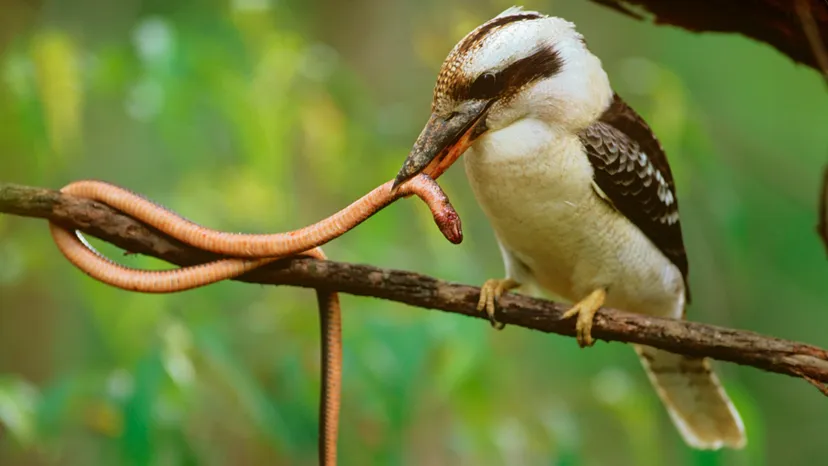Kookaburras are Dacelo genus terrestrial tree kingfishers native to Australia and New Guinea. The laughing kookaburra’s loud, distinctive call is frequently used as a stock sound effect in situations involving an Australian bush setting or tropical jungle, particularly in older films. Do you know why Baby Kookaburras have hooked upper beaks?
Kookaburras are born with a hook in their upper beak that they use to murder their siblings. It serves as their form of defense and weapon as they tend to kill each other at a very young age.
The Dangerous Childhood of a Kookaburra
According to new research, sibling rivalry often results in the murder of a younger brother or sister, so the Australian Laughing Kookaburra may not be such a cheerful bird after all.
Dr. Sarah Legge of the Australian National University’s Department of Botany and Zoology discovered that nearly all Laughing Kookaburras killed or starved a younger sibling before leaving the nest and that the parents tolerated this behavior.
In one nest we looked at, the youngest chick was killed by aggression from its siblings. Upon her return, the mother picked up the body, drew back her head, and popped it in her mouth
Dr. Sarah Legge, Australian National University, Department of Botany and Zoology
Kookaburras typically lay three eggs that hatch at different times, with the youngest chick suffering the most. Dr. Legge discovered that during hard times when little food is available, the hatching times, sexes, and size of eggs laid all change, increasing the chances of fighting.
For example, the last egg will be especially small, producing a relatively small chick that can’t defend itself against the onslaught of its elders. In this case the third egg is only laid as insurance against the possibility that either of the first two eggs fails to hatch
Dr. Sarah Legge, Australian National University, Department of Botany and Zoology
Baby kookaburras are born with a hooked beak that appears to be specially adapted for fighting their nestmates. According to Dr. Legge, only one other species, the Blue-throated Bee-eater, has such an adaptation.
Under some circumstances, it may be wiser to dispatch your siblings to ensure you are well-fed and healthy than to be selfless and end up as one of a brood of weedy individuals
Dr. Sarah Legge, Australian National University, Department of Botany and Zoology
On the other hand, the birds have a complex social life that combines extreme conflict with acts of intimate cooperation. Adolescent birds, for example, frequently assist in the rearing of the parents’ next generation of offspring. Only 3% of bird species do this, and kookaburras are one of them. (Source: ABC Net)
What is the Meaning of Kookaburras’ Laugh?
The creator god Baiame, according to an Australian aboriginal myth, made the kookaburra call out when the sun rose in the morning. The bird was so excited to see the sun that he laughed, startling people and other creatures. While it is true that kookaburras do laugh at dawn they are often referred to as the bushman’s clock“
They mainly do it to establish territory, they live in small family groups. And the laugh can be heard at any time of the day, though it is most frequent at dawn and dusk. The males might start the laughing kookaburra sound and the rest of the family group might join in. While a lot of it might sound the same to us, they will sound different within their family.
Julie Grove, Animal Embassy Manager for Maryland Zoo
(Source: How Stuff Works)
